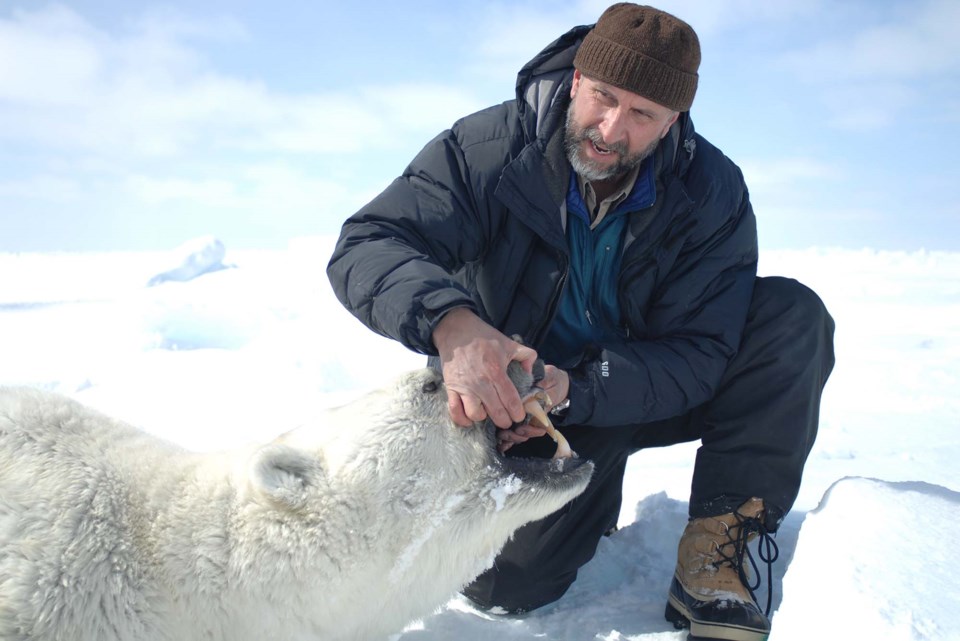Global heating won’t completely wipe out polar bears this century, but it could cause up to two thirds of them to disappear, says a University of Alberta researcher.
Biologist Andrew Derocher will speak on polar bears and climate change on Jan. 6, 2023, at the Telus World of Science in Edmonton. The talk is part of the centre’s ongoing Science on Tap series, which typically sees adult guests discuss science with experts in a bar over drinks.
Telus World of Science staff scientist Mirabelle Prémont-Schwarz said this edition of Science on Tap is being held in-house and without alcohol, so guests of any age can check out the centre’s Arctic Journey exhibit, which also discusses climate change and polar bears.
“Climate change is obviously a huge issue for our time,” she said, and polar bears are one of the most visible symbols of its effects.
Derocher, who has studied Canada’s polar bears for almost 40 years, said his talk will focus on the evolution of the polar bear and how climate change is affecting it. The bears are considered vulnerable internationally, with up to two-thirds of them set to disappear within 40 years.
“Our analysis indicates that we’re going to have polar bears out to the end of this century,” he said — the question is how viable those bear populations will be.
“There will be populations that will blink out.”
Climate symbols
Durocher said he switched to studying polar bears from grizzly bears early in career after he realized he would be unemployed each winter once the grizzlies went into hibernation. He has since spent decades tracking, tranquilizing, and tagging polar bears from a helicopter and published about 150 peer-reviewed papers on them.
Polar bears evolved from grizzlies, but are now almost their polar opposites, Derocher said. Instead of being brown terrestrial omnivores, polar bears are white marine carnivores that start their peak feeding season in the winter, which is when grizzlies are in hibernation.
Polar bears get most of their energy from seal fat, which contains twice as many calories as seal meat, Derocher said.
“They kill the seal and then they peel them like a banana,” he said, scarfing down up to 100 kilograms of fat a time.
Almost all of this feeding happens in the spring, as that is when seals are the most distracted by making and raising babies and most restricted by ice cover, Derocher said. Polar bears really pack on the pounds in these times — one female polar bear he studied went from a scrawny 100 kg to a bulky 425 kg after one season of seals.
Global heating is melting sea ice, which means less habitat and food for polar bears, Derocher said. It also means more human-bear conflict, as hungry bears roam settlements for food. Less ice has also made it harder for humans to hunt seals and easier for killer whales to pick off narwhals.
There are 19 polar bear populations in the Arctic, and they aren’t all seeing the same changes in sea ice at the same time, Derocher said. In Canada, researchers have seen polar bear numbers drop 20 to 50 per cent in recent decades among the three populations for which they have reliable data. The Western Hudson Bay polar bear population is on course to disappear in a few decades.
Polar bears are an easy way to explain the impacts of climate change, Durocher said. If we want to help the bears and the many other species affected by global heating, we can reduce greenhouse gas emissions by biking instead of driving, using less heat, and improving home insulation — all steps he has taken in his own life.
Tickets to Derocher’s talk are $12. Visit telusworldofscienceedmonton.ca for details.



